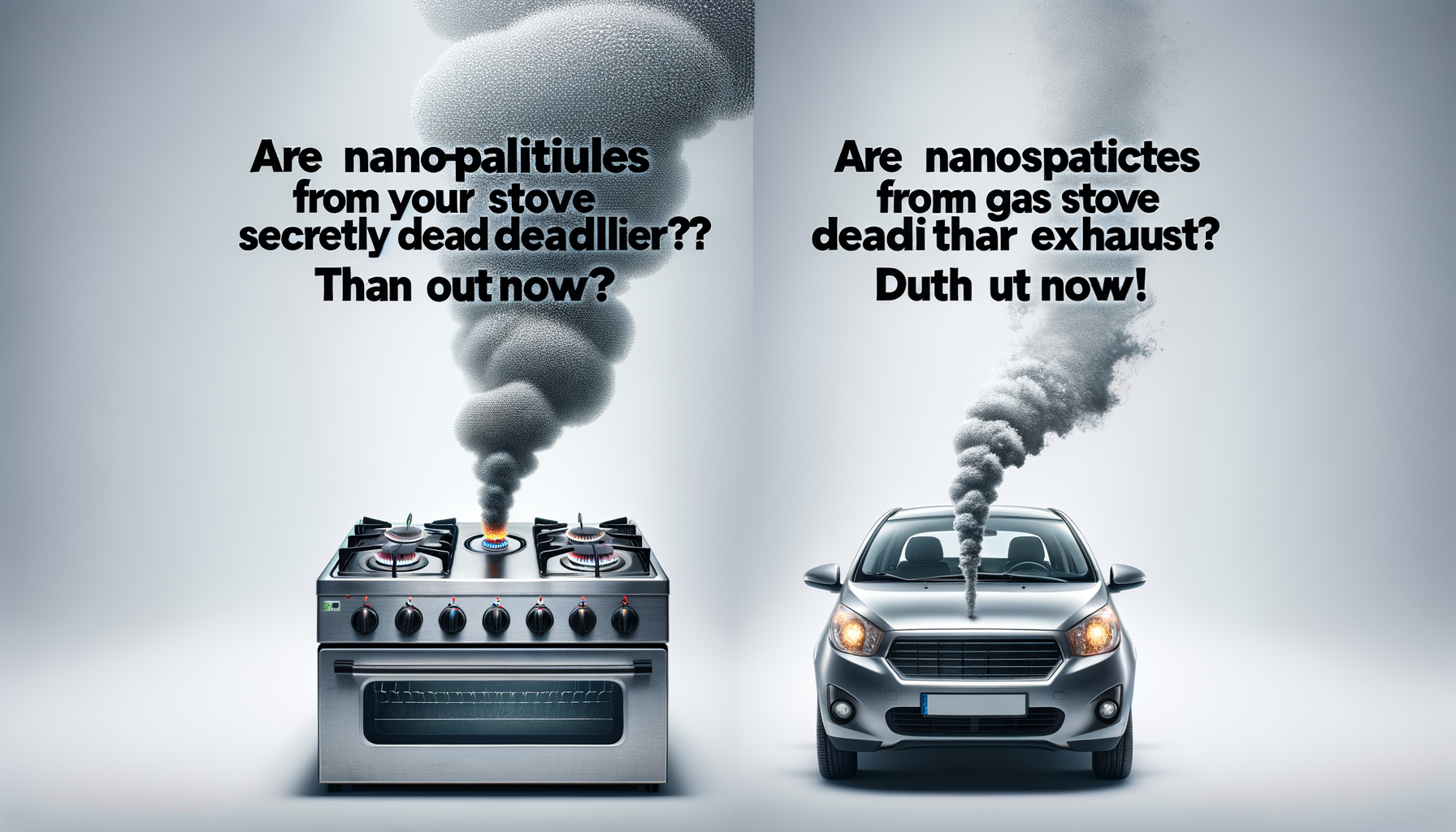Are Nanoparticles from Your Gas Stove Secretly Deadlier Than Car Exhaust? Find Out Now!

Unveiling the Hidden Dangers of Gas Stove Nanoparticles
Cooking in the comfort of our homes brings warmth and delicious smells, but could it also be exposing us to an invisible health hazard akin to automobile pollution? Research pointers suggest that indoor air pollution from gas stoves might introduce a significant amount of ultrafine particles, potentially more harmful than the exhaust from cars.
The Invisible Culprit: Nanocluster Aerosols
When you fire up a gas stove, the combustion process emits minute particles known as nanocluster aerosols, ranging between one to three nanometers in diameter. These particles are of such a minuscule nature that they evade visibility and can become inhaled deeply into our respiratory system, having the potential to circulate to other body organs.
Indoor air pollutants have raised concerns following findings from Purdue University in Indiana that liken the nanoparticles emitted from gas stoves to vehicle emissions in terms of their density in the air. Their latest study reveals that using a gas stove could introduce nanocluster aerosols at concentrations 10 to 100 times greater than what is encountered in a typical city street cloaked in automobile exhaust.
The Household Culinary Risk
With the migration of many households toward electric-induction cookers, motivated by convenience and reduced fire hazards, we now have another compelling deterrent from the conventional gas appliances. The convenience of an electric stovetop may also translate into a cleaner breathing space within your household.
Advancements in air quality analysis technology have allowed researchers like Prof. Brandon Boor to closely study and compare indoor pollutant levels to the better-regulated outdoor air quality metrics. It turns out that per kilogram of gas used, cooking can release a swarm of nanocluster aerosols competitive with the numbers produced by gasoline-powered vehicles.
Assessing the Scale of Internal Pollution
In controlled lab scenarios mimicking a residential kitchen, the emission of trillions of nanocluster aerosols was recorded when performing ordinary cooking tasks, such as boiling water or preparing fried foods. While many of these particles settle on various surfaces, a substantial amount remains airborne, enough to deposit in the adult respiratory tract and even more concentrated in children, due to their smaller size.
These findings shed light on the potential compounding effects when these nanoparticles mix with other larger particles from cooking foodstuffs, like oil and butter. Such a blend could create a unique particle behavior with uncertain health impacts.
Recommended Mitigating Measures
In light of these findings, it is suggested to operate kitchen exhaust fans during cooking to redirect harmful nanoparticles away. Future considerations are leaning towards the innovation of automatically-activated kitchen hoods, significantly reducing the likelihood of these particles being inhaled.
The study underscores the dire need to revisit our understanding of indoor pollutants and establish new strategies to minimize our exposure within our most frequented environments—our homes.
To summarize, gas stoves may be innocuous in their daily utility but could be silently imposing a significant health burden. This invisible pollution is igniting a call to action for enhanced ventilation systems and a shift towards cleaner cooking alternatives to secure our indoor air quality.





